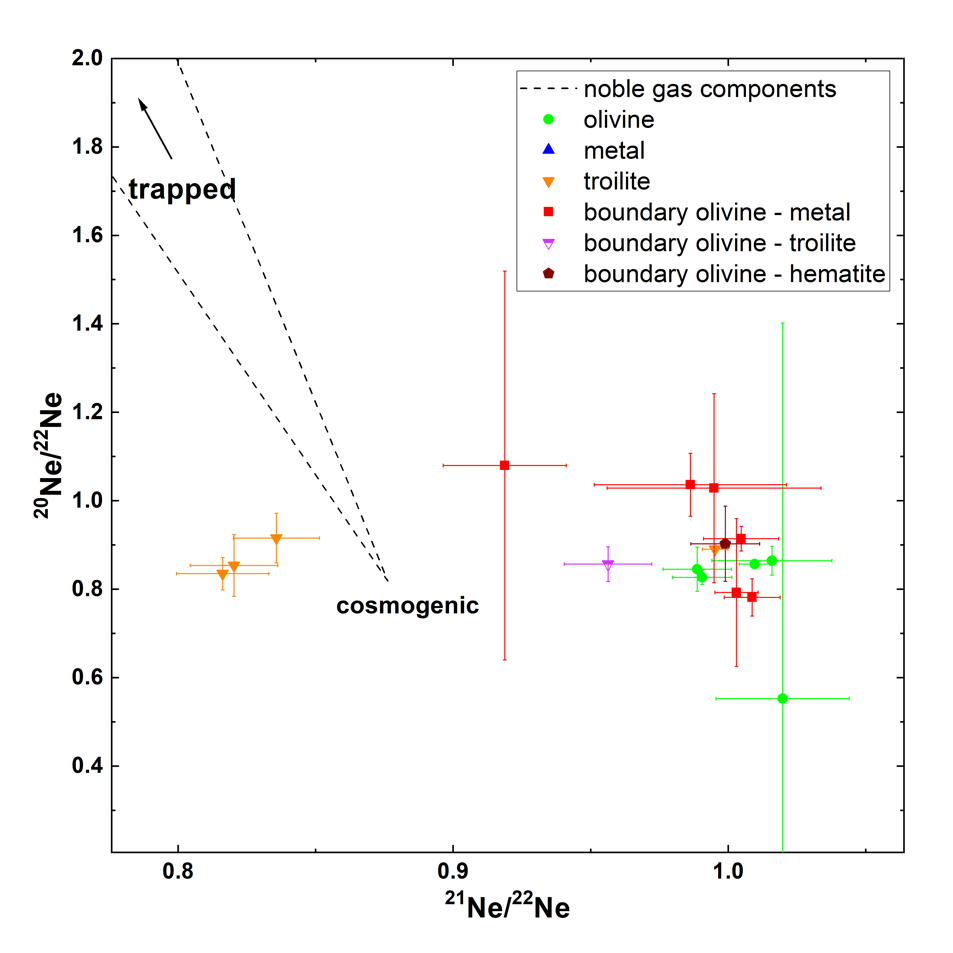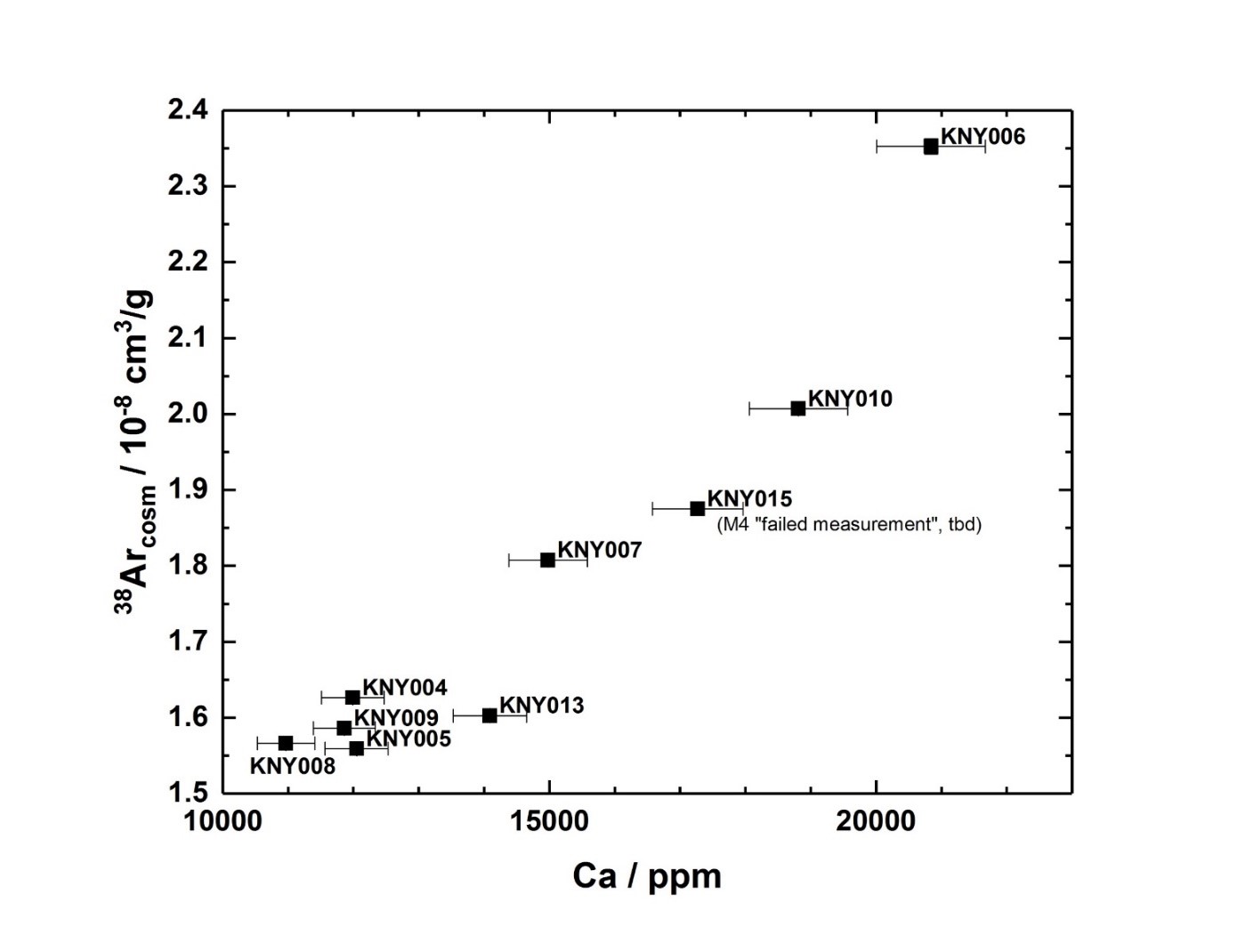Master's und Bachelor's theses
Developing UV Laser Ablation and Tracing Planetary Differentiation using the Micro-Distribution of Noble Gases in Primitive Achondrites and Stony-Iron Meteorites.
Sarah Seiler (2018)
Project led by the noble gas cosmo- and geochemistry group.
UV laser ablation is a valuable extraction technique for the measurement of in situ ablated noble gases. In this project, we developed and established the use of the UV laser at ETH Zurich for meteorites and compared it to other extraction techniques such as conventional melt extraction in an oven and melting with an IR laser. In order to contribute to the understanding of differentiation in planetary bodies, we studied the micro-distribution of He and Ne isotopes in iron-rich meteorites, so-called winonaites and pallasites. UV laser ablation allowed the noble gas isotopic composition of single ablated minerals to be distinguished and revealed a chemistry-dependent cosmogenic composition (Figure).

Find out more about our research
chevron_right Noble gas cosmo- and geochemistryDoes the heterogeneity of a meteorite at milligram scale affect the determination of cosmic ray exposure ages?
Maria Di Gregorio (2018)
Project led by the noble gas cosmo- and geochemistry group.
Cosmic ray exposure (CRE) in space produces cosmogenic noble gases including 3He, 21Ne and 38Ar, which are depleted in unexposed material. These can be used to calculate a “CRE age”, i.e., for how long a meteorite travelled from its parent body to the earth. However, discrepancies are often observed between CRE ages derived for the above isotopes for the same meteorite. We examined the effect of chemical heterogeneity on cosmogenic noble gas concentrations in the “ordinary” chondrite Knyahinya (chemical class LL/L5). Both noble gas and major element compositions of multiple small aliquots of Knyahinya were measured. The concentrations of the major elements were determined and some vary significantly from sample to sample and correlate with 38Arcosm. The results were presented at an international conference. This study demonstrates that it is essential to measure both element concentrations and 38Arcosm in the same sample aliquot to understand 38Ar CRE ages.

Contact
- Location location_onNW C 84
- Phone phone+41 44 633 82 28
- Fax print+41 44 632 11 79
- web_asset Detail page
Inst. für Geochemie und Petrologie
Clausiusstrasse 25
8092
Zürich
Switzerland

